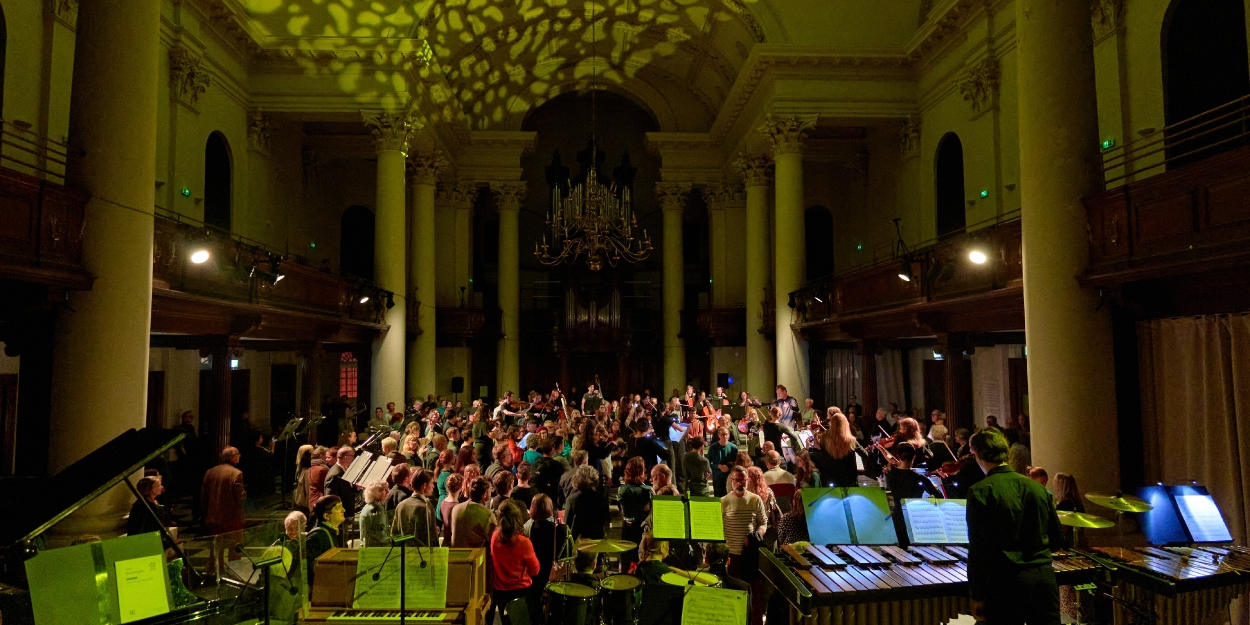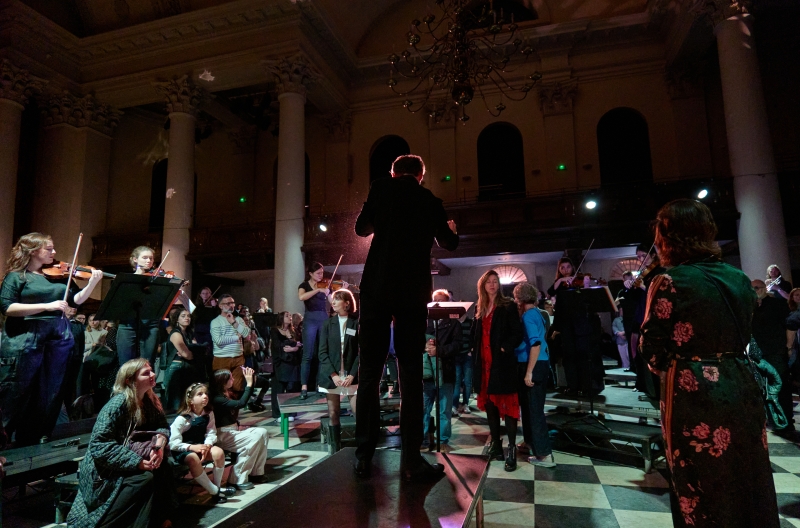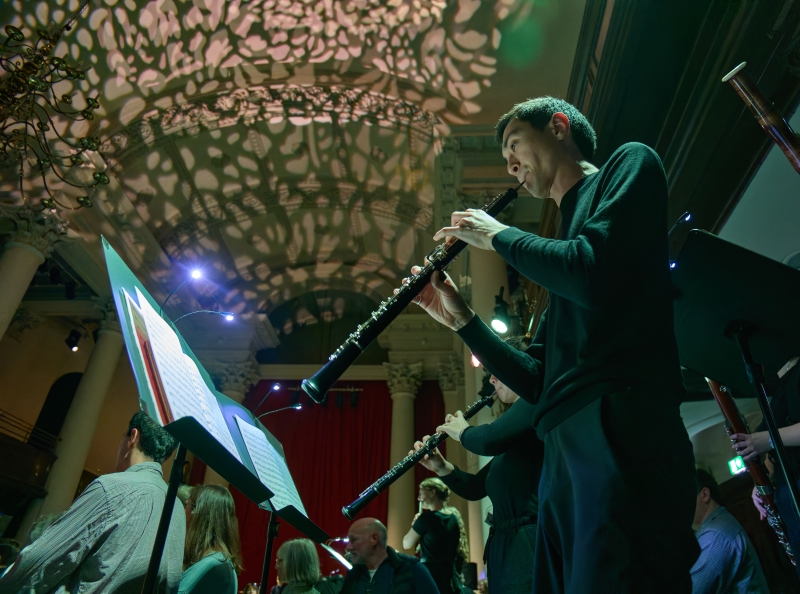Review: THE ORCHESTRAL FOREST, Smith Square Hall
Why can't more classical music concerts be immersive?

![]() Featuring works as diverse as Michael Nyman’s “Strong on Oaks, Strong on the Causes of Oaks” and Felix Mendelssohn’s “Overture” from A Midsummer Night’s Dream, Sinfonia Smith Square’s environmentally-minded concert The Orchestral Forest is an enchanting sonic experiment.
Featuring works as diverse as Michael Nyman’s “Strong on Oaks, Strong on the Causes of Oaks” and Felix Mendelssohn’s “Overture” from A Midsummer Night’s Dream, Sinfonia Smith Square’s environmentally-minded concert The Orchestral Forest is an enchanting sonic experiment.
In some ways, it recalls The Flaming Lips’ 1997 collection Zaireeka and their failed attempt to create an experience of juxtaposed sound. The idea was that the album would be composed of four CDs which, when played simultaneously in different corners of the same room, would produce a unique musical blend. Here, the creative director and sound designer Matt Belcher has arranges the Sinfonia around auditorium with enough space for the audience to wander between them as they play.

Some thought has gone into the layout with conductor Maxime Tortelier as well as the string and wind sections are on barely raised platforms while the percussion instruments are positioned on the main stage. George Andrews’ crepuscular lighting adds fathoms of depth, making this venerable and immense space feel much smaller and denser than it really is. That, in turns, adds volume and intensity to the orchestra’s output regardless of where we are stood.
The orchestra came together over the pandemic due to the merger of Southbank Sinfonia and St John’s Smith Square and have gone from strength to strength with creative works such as this that intersperses classical sounds with atmospheric sound effects and voice overs.
After some sombre stats on Britain’s rainforests (they once covered 20% of the land and now occupy less than 1%), Dobrinka Tabakova’s The Patience of Trees begins with mournful tones as guest violinist Emma Purslow works her way through the crowd to her stand. At twenty minutes, this 2021 concerto grows in power through its twenty-minute length and evokes a sense of loss and then hope, first through Purslow’s solo efforts then a more emotive sweep as the strings join her.

Mendelssohn’s pastoral piece from his much-loved 1842 score acts as a bit of a palate cleanser before two shorter pieces are played. Vagn Holmboe’s 1989 “Prelude to the Pollution of Nature” is prefaced with the roar of a chainsaw ripping through wood followed by the sound of a mighty tree crashing down to the ground. The eight-minute work is one of ten preludes written for sinfonietta written at the end of his career but, even aged 80, he found angry expression in this piece through a roiling rumble from the strings. There’s a momentary calm as the woodwinds wax lyrical but that only clears the way for a brutal finale.
Influential French composer Nadia Boulanger’s “Vera la vie nouvelle” is even shorter at four minutes but, as played by guest pianist Zeynep Özsuca Rattle, is a haunting melody that subtly gains in intensity and momentum as it reaches its climax. The concert ends with Nyman’s “Strong on Oaks, Strong on the Causes of Oaks” which features his trademark minimalism before a spectacular ending.
Seeing musicians of this quality up close and at eye level rather than down in the pit is a thrill in itself. September’s Kirill Richter’s Sands Of Time at the Coliseum is a prime example of how being able to almost inhale the dynamism of the orchestra produces an electrifying atmosphere even if the conductors have very different styles: while the charismatic Alibek Kabdurakhmanov rocks and rolls around on his podium, barely staying still for a moment, Tortelier has a more classical and focussed demeanour as he studiously scans the room.

The freedom given to audience members to move between the artists and see them up close is similar to that seen in Robert Binet’s Dark With Excessive Bright, the key difference being that the latter work used ballet dancers instead of musicians. In both cases, there’s an unparalleled view which is impossible to imagine from even the best seats and the memorable sensation of being surrounded by supreme talents at work. There’s a fun sense of agency too here as the audience gravitates with the music depending on where the emphasis currently is; when Özsuca Rattle stars on Boulanger’s piano solo, it is not just eyes that are engaged but legs too as people wander towards the stage for a close-up view. Interestingly, although the crowd is happy to swirl around the room as they wish, very few step in front of Tortelier; even in this liquid and permissive environment, the space around the conductor is subconsciously deemed sancrosanct.
Although companies like OperaUpClose do a fine job in engaging with those in the pews, much more can - and should - be done across all organisations working with classical art forms if they wish to to stay relevant, grow their fanbase and, perhaps most importantly, attract public funding. Immersion in live productions thus far has focussed predominantly on dramatic works but, as Binet showed at the Royal Opera House in February and Belcher amply demonstrates here, there is an opportunity to bring the classics into the 21st century by standing on the shoulders of theatre and exploring new forms of expression.
More information on The Orchestral Forest can be found in Matt Belcher’s blog post.
Photo credit: Sophie Oliver
Reader Reviews
Videos

